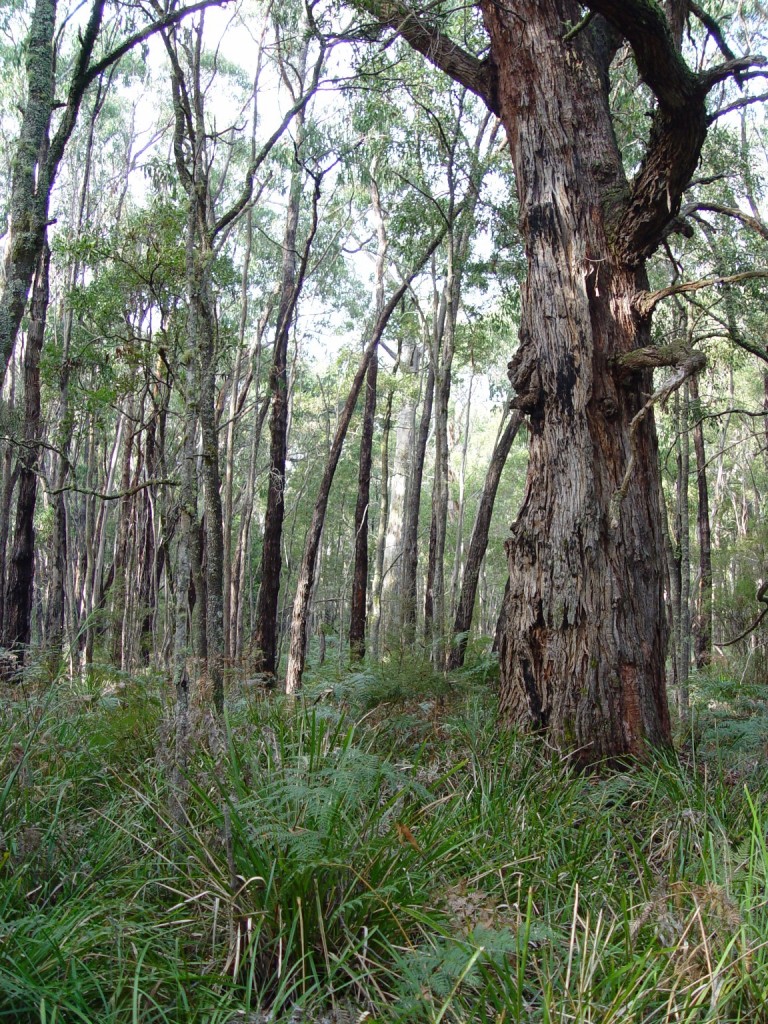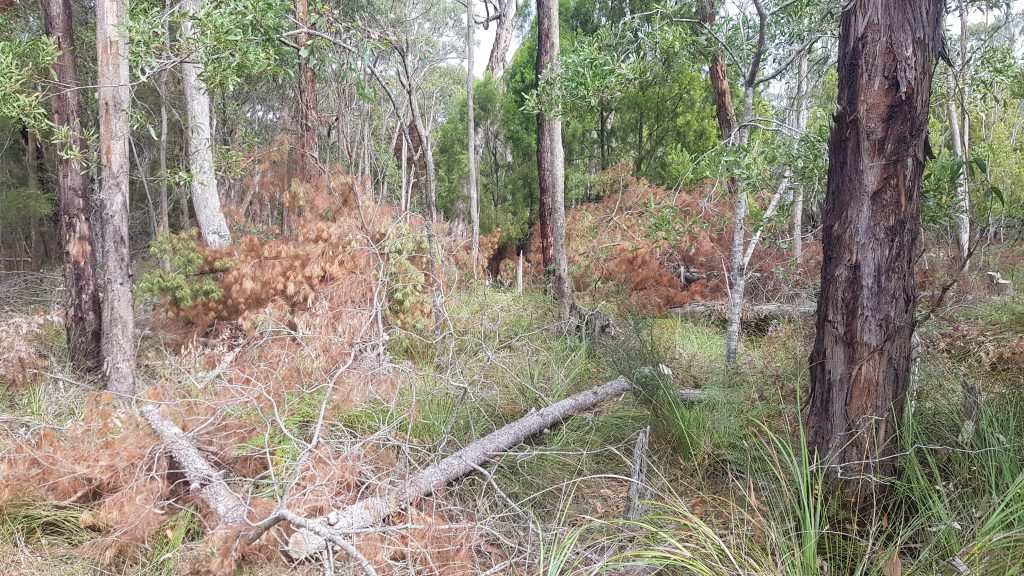To drill or not to drill? That is the question when treating woody weeds
As our woody weed removal project continues in Cobboboonee National Park, it’s time for another little update from the field. The aim of the project is to assess and treat emerging woody weeds within the 2020 Mount Deception bushfire zone and surrounding areas. The most frequent species we’re encountering are pine wildlings (“wildlings” being the name given to escapees from Pinus radiata plantations) and sweet pittosporum (Pittosporum undulatum), a species native to East Gippsland, New South Wales, and Queensland.
The NGT bushcare team has been covering a large amount of land on foot and also along roadsides within the National Park, endeavouring to find as many weed infestations as possible. And I can tell you something for free: there are a lot for pine wildlings. Encountering such large numbers of pines, bushcare team member Rosemary posed the question: to drill or not to drill?
In woody weed control, and in particular with pine wildlings, there are a number of different methods at our disposal and I thought it might interest some readers to know how we go about decided which method to use where.

Method 1: Drill and fill
This method is our first preference when treating pine wildlings. The process involves drilling a series of holes into the trunk, on a downward angle, making sure to go through the bark and into the cambium layer. The holes are then filled with an appropriate herbicide and the tree gradually dies in the following days to weeks. Benefits of this method are that pine seeds are prevented from maturing and all the pine needles fall under the tree which limits the suppression of native understorey. This method avoids possible safety issues involved in chainsawing. Rosemary’s handy tip is to mark a treated tree with paint so that it can be easily seen from a distance.
Method 2: Ringbarking
Ringbarking involves removing the bark around the circumference of a tree trunk, which when done properly kills the tree. The ecological gains are much the same as the the drill and fill method, but the method is more labour intensive than drill and fill.

Method 3: Felling
Felling involves cutting the weed tree down, usually with a chainsaw these days. This method instantly kills the target and avoids herbicide use. Compared to the methods above, felling can have a greater impact on the understorey; there are also safety issues to consider, as well as the fact that seeds may still mature on the felled tree. Weighing up the costs and benefits, we apply this method when working within 50 metres of roadways, walking tracks, and camping grounds. In these locations of higher human use, it is important that the weed treatment doesn’t create a risky hazard down the track; therefore, controlled felling is the winner. Our tip when considering felling, is to know your limitations and ensure you’ve undertaken the appropriate training.
So, there you have it: our thought processes regarding treatment of pine wildlings and most woody weeds. If you require anymore information regarding our methods, please reach out and get in contact here (or copy the email below).
This project is supported by the Australian Government’s Bushfire Recovery for Wildlife and Habitat Community Grants Program.

